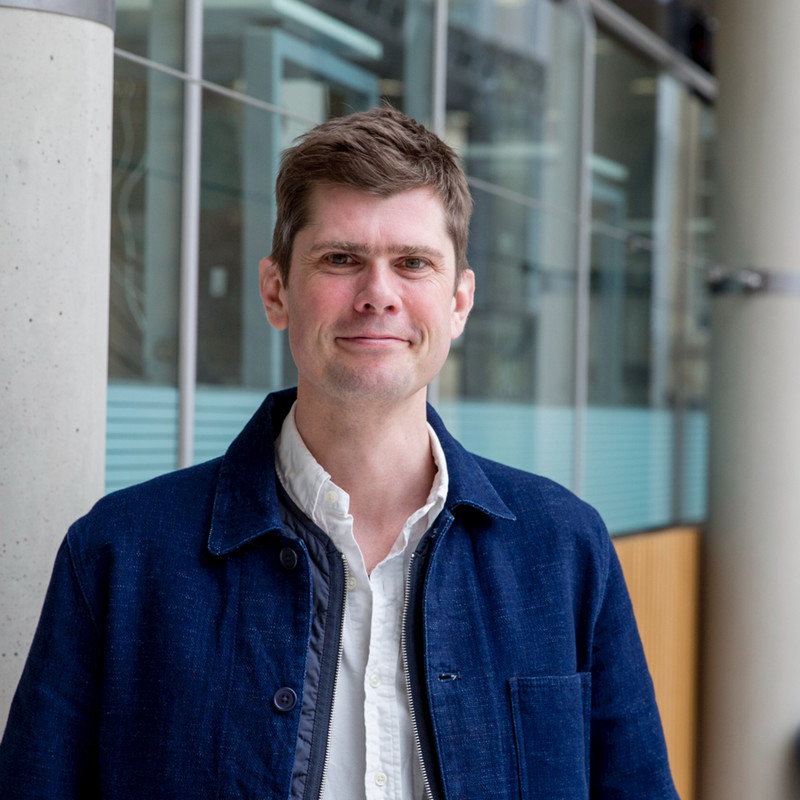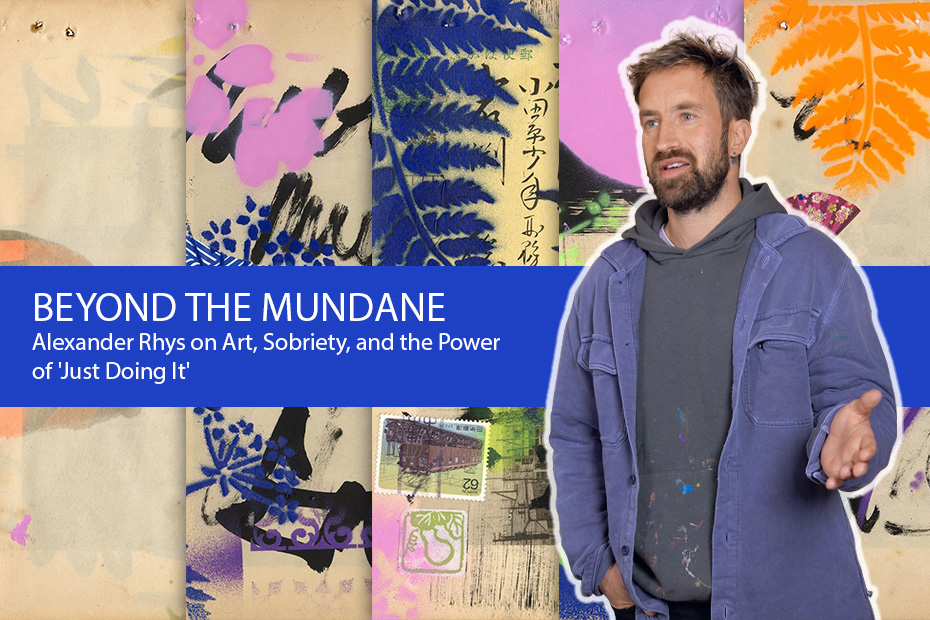It was a chilly morning in Barnt Green. As I approached Alexander Rhys’ studio, tucked discreetly behind the high street, I was eager to find some creative ‘heat’. The space immediately felt vibrant – a place where transformation happens on canvas and in life.
My conversation with Alexander, which you can watch now on our YouTube channel, reveals an artist whose work is deeply intertwined with his journey to sobriety and his talent for sharing purpose in life.
Finding Narrative in the Ordinary
The cornerstone of Alexander’s talent is spotting potential in the mundane. He attributes this to a pivotal moment at university when a discarded pink plastic chair popped in the sunlight and “really opened his eyes up” to the art of capturing the everyday. Honed by photography, Rhys’ compositional alchemy enables him to observe and honestly look at colour combinations, relationships, angles, and perspectives. He believes that everyday things, from ashtrays to discarded kebabs, “really are interesting… in themselves” if only we pay attention, viewing himself almost like a detective piecing together stories from visual clues.
Art as a Catalyst for Transformation
Alexander’s path to becoming a full-time artist is inextricably linked to his sobriety. In our interview, he speaks candidly about the false belief that substances are necessary for creativity. He credits the Prince’s Trust, a youth charity founded by King Charles III, with “saving his life,” particularly a turning point when sales of his work from their London shop validated the possibility of making a living from art. This turning point and his newfound sobriety allowed him to fully commit to his art, leading to his success as a full-time artist.
Sobriety brought “improved clarity and focus.” While his earlier work was more diffuse and unfocused, his painting is now more defined, with “conversations within the paintings.” Only now, sober, can he fulfil his purpose: painting is why he was “put on this planet.”
Painting for Peace and Well-being
Alexander’s journey gives him a profound understanding of art’s therapeutic power, and he advocates its benefits for everyone, regardless of training or background. People don’t need a brush – a spoon or brick can apply paint. This focus on simple actions and being in the moment with the creative process is, he believes, great for mental health, pulling the creator away from anxieties about the past or future.
For Alexander, painting offers a sense of zen and escapism, helping him manage his struggles with anxiety and OCD. While creativity and mental health challenges often coexist, he doesn’t make his struggles the explicit subject of his work. Instead, painting is the therapeutic outlet – a space for fun, spontaneity, and exploring like a ‘kid again’.
A Synthesis of Influences
Alexander’s artistic style is a captivating blend of diverse influences, often incorporating elements from artists he admires to bring them back to life in his way. Beyond the many nods to Basquiat, Rhys specifically highlights three artists who deeply resonate with his practice:
- Monet: He sees a connection to Monet in exploring depth and layers, aiming for a “floating effect” reminiscent of the lily ponds.
- Cy Twombly: Alexander is drawn to Twombly’s mark-making, the suggestion of script, and the fluidity of writing. He admires how Twombly’s work seems to “dance across in this fluid gesture across the canvas.”
- Hans Hoffman: Alexander is inspired by Hoffman’s technique of putting “robust structures onto a floating backdrop,” playing with ideas of illusion and movement. This concept of structured elements against a more fluid background informs the composition and layering of his canvases.
Perhaps more important than these Western masters, traditional Japanese art and painting are significant inspirations, particularly using gold and script. His love for gold is evident; he explains how the layers of gold make the painting “dance,” “move,” and seem “alive” when the light hits it, combined with acrylic spray paint.
Sharing the Journey: Alexander Rhys in the Vieunite Library
Of course, several of Alexander’s works are in the Vieunite Art Library. In particular, a series of intimate works based on his travels in Japan, created on found paper and inspired by postcards, are available now for display through the Vieunite app. These pieces, ‘Kyoto Love Letter’, ‘Tokyo Notebook’, and ‘Mount Fuji Rise’, made on paper that he found in a market in Japan, are like “love letters” being sent from Japan back home. Just looking at those images, even before we spoke, I felt not only that I knew him because they are so personal but also, in some small way, that I knew Japan, a place I’ve never visited. That ability to transport and connect with viewers is potent.
Determination and Doing It
For aspiring artists, Alexander offers some practical advice alongside his artistic philosophy. He cautions artists to be wary of people trying to take control of their work and trust the advice of supportive family and friends. He stressed that success takes a lot of hard work and determination – he worked for 10 years, starting with “no money,” to get to where he is today.
Ultimately, his creative process is deeply tied to spontaneity and action. He prefers painting early in the morning before his mind gets “cluttered” and he can overthink. His philosophy is simple: “Just do it.” If you have an idea, don’t overthink or let fear stop you – “if you don’t do the idea then… that ain’t going to happen”.
Alexander Rhys is an artist whose work feels as rich and layered as his personal story. From finding narratives in the overlooked to transforming personal struggles into creative strength, his journey highlights the profound connection between life, art, and the power of just putting paint on a surface. And his advice for buying art? Simple: “Buy mine”.
The full interview is available on YouTube:

Benedict is Vieunite’s Cultural Director and a lecturer at Nottingham Trent University.
